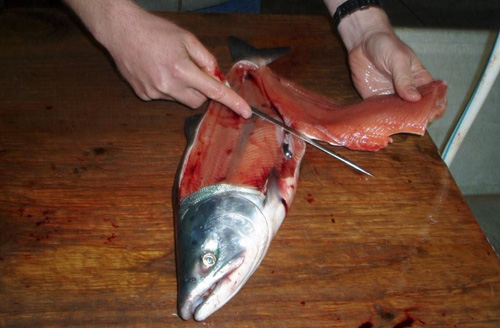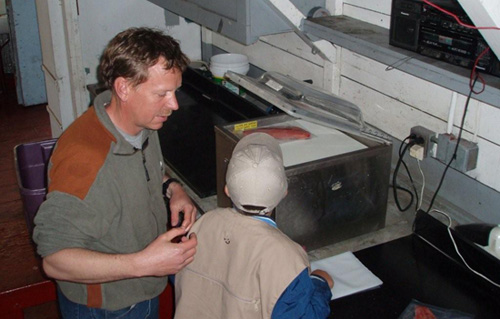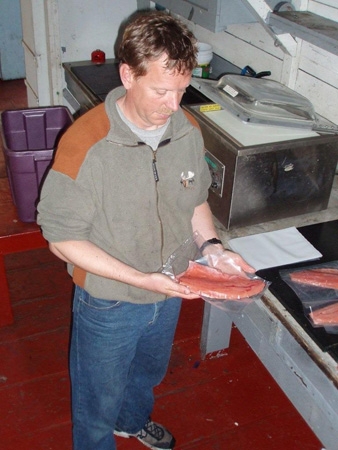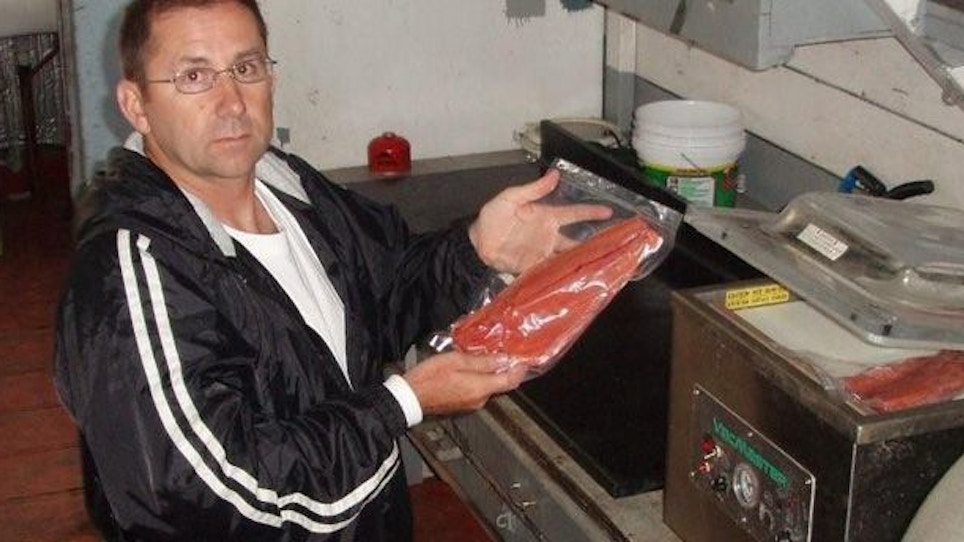 Fishermen determined to fill a cooler with crappies, walleyes or tuna streaks will someday face the problem of how to preserve their catch until it is eaten. An average family will never consume huge amounts of food within a few months or so, which means effective and safe freezer storage will be the only way to preserve your fish.
Fishermen determined to fill a cooler with crappies, walleyes or tuna streaks will someday face the problem of how to preserve their catch until it is eaten. An average family will never consume huge amounts of food within a few months or so, which means effective and safe freezer storage will be the only way to preserve your fish.
There is still some merit in the traditional methods of freezing fish and I’ve tried them all. I’ve wrapped venison steaks tightly in plastic wrap, and then double packaged them in sealable plastic bags. I have also resorted to freezing fish fillets in a block of ice in milk carton, which works if you don’t mind having a freezer that looks like an ice house. The problem with these methods is the length of time fish and game will stay fresh in a freezer.
Trapped oxygen, which is virtually impossible to eliminate with traditional packaging, will promote bacteria that will spoil the quality of the food and this will show up in odor, color and general deterioration of quality. Freezer burn is another hazard with plastic wrapped fish.
In recent years, vacuum packaging machines have proven their worth to sportsmen, who can now safely freeze and preserve fish and other game meat for much longer periods of time than traditional storage methods. Vacuum packaging machines work on a simple principle. They literally suck all the oxygen out of a package before it is placed in a freezer. Freezer burn is virtually eliminated because the food no longer comes in contact with cold, dry air. Foods that that have a high fat and oil content, such as certain species of fish and game, won’t spoil because they do not come in contact with oxygen, which may cause a rancid taste. In an oxygen-free environment, such as vacuum packaging produces, the bacterium that creates spoilage does not multiply fast and the loss of food quality is slowed down drastically.
 The major advantage, of course, is the length of time vacuum-packed food can be safely kept frozen in your freezer. Vacuum packed fish can be safely stored in a freezer for up to two years. In the past, I never kept fish for more than six months. A rough rule of thumb is that a vacuum packed food will stay fresh 3 to 5 times longer than the conventional plastic wrap.
The major advantage, of course, is the length of time vacuum-packed food can be safely kept frozen in your freezer. Vacuum packed fish can be safely stored in a freezer for up to two years. In the past, I never kept fish for more than six months. A rough rule of thumb is that a vacuum packed food will stay fresh 3 to 5 times longer than the conventional plastic wrap.
I fished in Alaska last year with an outfitter who had a commercial vacuum packing machine. At the end of each day, he vacuum packed salmon and halibut fillets and stacked them in a huge freezer. Packed tightly with no ice in a waxed fish box, the fillets were still frozen when I unpacked them at home in New Jersey. Now, nine months later, the fillets still taste great.
Vacuum packaging will only work if you get your fish home in good shape. If you decide to bring fish home, kill them quickly and get them on ice. The more slowly a fish dies, the more rapidly the flesh will deteriorate. More good fish are ruined during the drive home than during any point in the trip. Never pack fish in direct contact with ice. Fish lying in melting ice water will deteriorate and become soft and mushy. Vacuum packing won’t save it. Put the fish in a plastic bag and put the bags on ice. When fishing, I try to always keep a bucket of crushed ice and saltwater next to me. The brine mixture will keep the fillets firm until I can vacuum pack and get the packages into a freezer.
If you’re a fisherman, a vacuum packaging machine can also keep you supplied with fresh bait. If you seine, net or trap more bait than you can use in one day, vacuum package it and it will keep fresh until your next trip. Vacuum packaging would be especially useful with rigged natural baits, such a ballyhoo or eels. I’ve vacuum packed everything from sea clams for striper fishing to fish heads for crab bait. Vacuum packages are also odor free, a big plus when you store various baits in the family freezer.
A commercial-grade vacuum packaging machine would be a good investment for hunting and fishing club, where such a machine would get heavy use from members. There are several good models on the market. Commercial vacuum packaging machines, however, are not cheap and could prices could range up to $3,000 and higher.
 Choosing the a Vacuum Sealer
Choosing the a Vacuum Sealer
Vacuum packaging machines range from several hundred dollars to more than $3,000, depending on whether they are built for commercial or home use. Commercial machines generally mean the entire bag containing your food is placed in a chamber and the pump extracts the air from the entire chamber.
Vacuum machines built for home use are usually designed differently. The bag is placed on the outside of the machine with only the opening placed in the opening edge of the machine and oxygen is sucked out.
For the average sportsman, vacuum packaging machines built for home use will work fine. A hunting club might want to consider a commercial machine for heavy usage on fish and game.
FoodSaver, one of the pioneers in vacuum packaging for home use, has several models, but two professional-grade models called GameSaver Pro and GameSaver Turbo are most suitable for sportsmen. The GameSaver Turbo has two vacuum pumps instead of one and is 30 percent faster than earlier models. It also has a heavy duty extra wide sealing strip. A five-level seal control which lets the user adjust the length of the sealing process. This model sells for under $300. The GameSaver Pro sells for under $200, but doesn’t have some of the features of the Turbo model.
Cabela’s CG-15 Vacuum sealer has a stainless steel body and has a double-piston pump. The 15-inch sealing bar is bigger than most models on the market. It has a large digital display and a manual or auto seal option. It sells for under $500.
A unit for high demand home use and light commercial use is the FMA-MT500. It’s a rugged machine with adjustable electronic timing and sealing. It’s priced at about $465.
VacMaster SVP-20 is a commercial packaging system. This is the unit we used in Alaska for our salmon and halibut. Just place the fillets in a bag, drop the bag into the chamber, close the lid, and the unit automatically seals the bag. The lid automatically lifts when the cycle is complete. An accessory vacuum port allows use of optional reusable jar sealers and canisters. The unit is all stainless steel with a huge chamber that measures 17” x 17” x 7”. The unit is priced at about $3,000. VacMaster also makes the Vac Pro 150 for home use. It also features dual pumps and stainless steel construction.
There are several other companies producing vacuum packaging machines, such as Anvil VMA and Berkel. Shopping online will display a wide variety of machines, details and pricing. All of them are good investments and will extend the freezer life of your fish and game.






